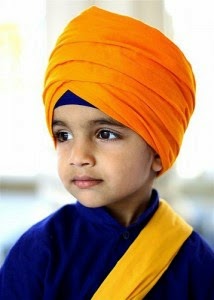Back in 2012, I
posted (on one of my other blogs, mepop) about Yasmine Hamdan's self-titled album, released in Lebanon and France in 2012, and the song "Beirut" from the album. Here is the video that came out at that time.
The lyrics were posted as well, which I've copied below.
بيروت
شرب العرق
شرب العرق
لعب الورق
خيل السبق
صيد الحمام
رسمال بيروت
لبس الغوى
شم الهوى
اكل الهوى
شاغل عقول
سكان بيروت
بيروت
زهرة من غير أوانها
بيروت
محلاها ومحلا زمانها
بيروت
يا حينها وياضيعانها
تدبل
ما في عمل
ما في امل
برك الجمل
ركب النحس
تجار بيروت
الغندرة
والفنغرة
والبهورة
كتر البطر
هالك بيروت
Beirut
Arak drinkin'
Card playin'
Racehorse cheerin'
Pigeon huntin'
The essence of Beirut
Seduction crowd
Cruisin' around
Foolin' about
Tis' all there is on the minds
Of the citizens of Beirut
Beirut
A flower off its terrain
Beirut
Oh her beauty, her good old days
Beirut
That dire end, all a waste
Withering
All unemployed
Hopeless
Ruined and rusted
Jinxed and accursed
Those dealers of Beirut
Oh the strutting
That fancy livin'
Excess of splurging
Exploded vanity
Smothering Beirut
Now, finally, the album (under the title
Ya Nass) is being released in the US, on March 25, from the Crammed Discs label. Why the wait? Who knows? Why now? Maybe to coincide with the appearance of Yasmine in Jim Jarmusch's film
Only Lovers Left Alive, which I
posted about a couple weeks ago.
Here's some promo about the "new" album. In it we learn that the lyrics to "Beirut" were adapted from a poem written in the 1940s by poet Omar El Zenni. And there is new video, about which the promo tells us: "Y
asmine
Hamdan and her director Nadim Asfar used footage from super 8 films
which were purchased in a Lebanese souk by one of Yasmine's friends, who
collects them. These films were shot in various eras (from the 40s to the 70s), and are bringing these bygone times back to life." Check it out. If you've lived in Beirut, like I have, you will really like that super 8 footage.
We also learn from the promo that the song "Hal" from the album which is not on the French/Lebanese version, and this is the song that Yasmine does in the Jarmusch film. You can check it out here.
The very sharp observer Hammer commented on my earlier post. He has seen the movie, he doesn't think much of Yasmine's singing (I don't agree but I understand why he is critical). Here's what he says about the song: "The whole gig is a way to ride a now-defunct wave of using qaraqeb
in pop music. [i.e. it incorporates Gnawa percussion]. Her song which she sang is not a song actually: It's a
medley of words taken from old, '40s songs that most Arabs still hum and
sing. The anachronistic twist is that, most Moroccans do not sing these
songs or maybe know of them, as their musical tastes veer off into the malhoun and the ever-present chaabi."
That is to say, the scene where she sings is set in Tangier, but she isn't singing Moroccan music. Unfortunately, you can't ever imagine that US directors like Jarmusch would ever care about such things. He heard Yasmine's music, he met her, she's an Arab...you know.
Here is the list of songs on the album, via iTunes. This is what the cover looks like:
And here's the cover of the 2012 album.
And here's more about Yasmine and the Lebanese album, from Kwaidan Records.
I can't find a tracklist online right now for the 2012 version, so here it is:
1. In Kan Fouadi
2. Beirut
3. Samar
4. Baaden
5. Ya Nass
6. Irss
7. Nediya
8. Nag
9. Shouei
10. La Mouch
11. Bala Tantanat
You can check out the song "Deny"
here (not on album 1). Also "Khalas" (not on album 1)
here. "Samar," on album one, and two,
here. "In Kan Fouadi," on one and two
here.



















